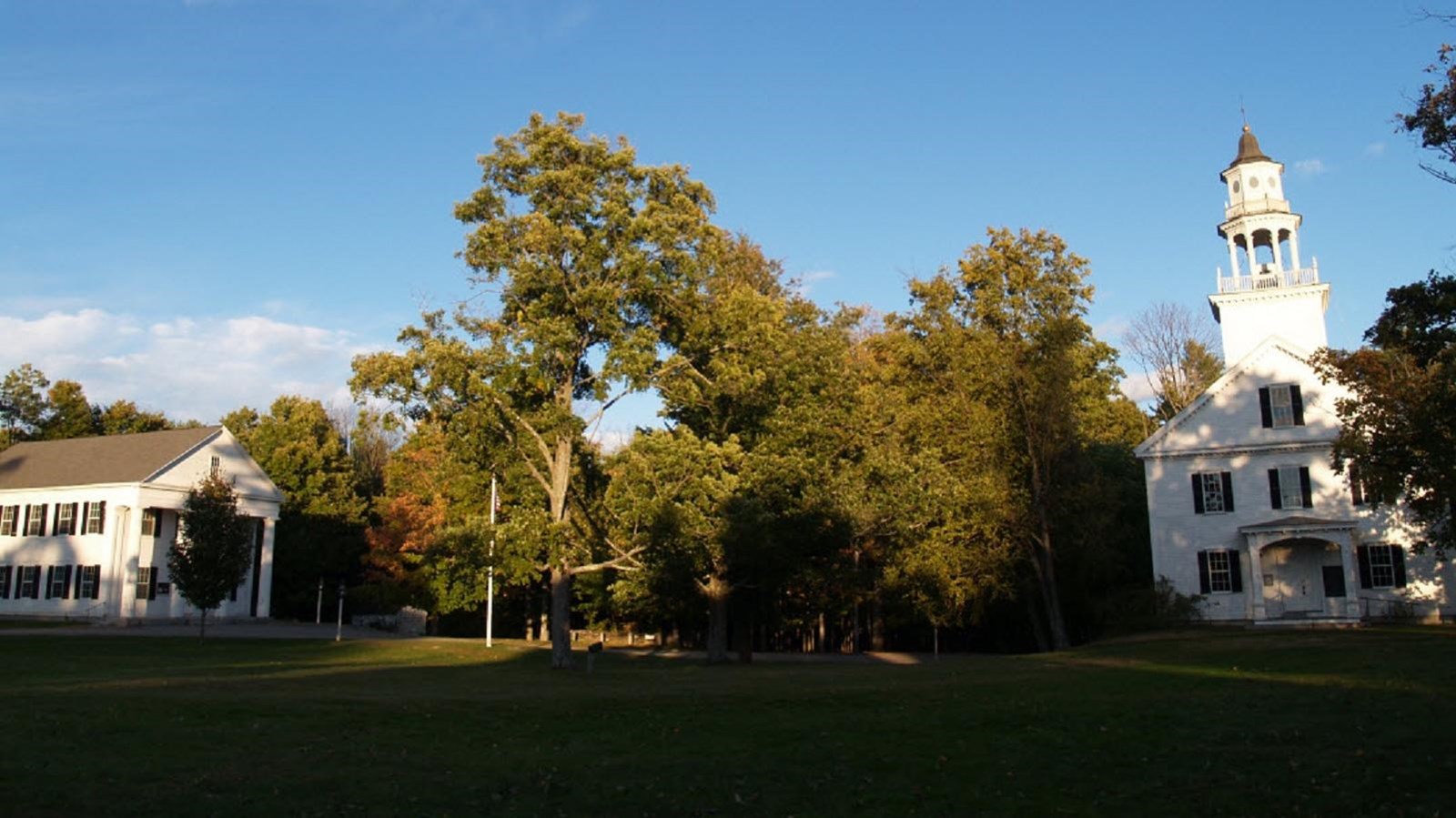Last updated: July 8, 2020
Place
Shirley Center Historic District

Photo by Marcbela Marc N. Belanger, CC0, https://commons.wikimedia.org/w/index.php?curid=6194501
“The community par excellence was [and is] the colonial New England village. Take my own hill hamlet—Shirley Center, Massachusetts, as I knew it as a boy, with its seventy-one souls in the 1880’s. A meeting house, a red brick schoolhouse, a store, farmhouses, wheelwright shop and town hall—seats respectively of religion, education, commerce, agriculture, industry, and government—the basic elements of civilization…Except for the motor car and plumbing, this description holds in large measure for Shirley Center today as I sit in my white clapboard house on one of its shaded streets and write these words”
—Benton MacKaye
The area that once provided inspiration to regional planning visionary Benton MacKaye now is part of the Shirley Center Historic District. Best known as the father of the Appalachian Trail (1921), MacKaye also co-founded the Wilderness Society (1935) and the Regional Planning Association of America (1923). Shirley Center Historic District is a fine example of an 18th- and 19th-century rural New England town center with its civic meetinghouse core surrounded by residential buildings. Originally coming to Shirley Center as a summer retreat with his family, MacKaye ended up living until his death in 1975 in the Betsey Kelsey House, one of the buildings that contribute to the district’s historic significance.
Benton MacKaye was born in Stamford, Connecticut, one of six children of actor and playwright Steele MacKaye. Benton’s early years involved frequent moves, as the family followed Steele MacKaye’s career. The Shirley connection began for the MacKaye family in 1882, when they first visited cousins who owned a summer home in Shirley. In 1888, when Benton was nine years old, the family purchased their first permanent home: a cottage located a short distance from the Shirley Center Common. Lewis Mumford, a friend and colleague of MacKaye, wrote of the influence that MacKaye’s new home in Shirley Center had on him from an early age: “As soon as he reached Shirley, he knew he was home; and from that time on this village has been the center of his life, despite many prolonged absences.”
In later years, MacKaye described his boyhood years in Shirley as among the happiest years of his life. His boyhood explorations of Shirley, at the age of 14, also laid a foundation for his later work as a regional planner:
“Expeditions” I called them. Why this imposing title? Well, I had at one time [at the age of fourteen] been in Washington, frequenting the Smithsonian Institution. There I met collectors from distant lands and saw the product of their expeditions, including Peary, starting on his first voyage to the Arctic...Then and there I caught the bug. Why shouldn’t I, my own self, be an explorer?--up there in my own homeland...? And so the scheme. I would explore the country within walking distance of my home in Shirley Center (radius four miles). I would in particular map the forest, “deciduous and evergreen”… And in general I’d scan the region’s habitability… I would number my expeditions: “No.1, No. 2,”...etc. and off I went.
By No. 9 I had reached the top of the divide (between Mulpus and Squannacook)—Hunting Hill (MacKaye, 1969)
From the top of Hunting Hill, MacKaye could see key elements of the whole region: Shirley’s church steeple, steam from the locomotive from Boston, and the wooded hills beyond. The search for a healthy regional balance, which included all of these elements, provided the philosophical underpinnings for his later work.
MacKaye returned to Shirley Center throughout his adult life. He lived there for several long periods during lulls in government employment in the 1920s and worked on several of his creative writing projects while residing in Shirley. After his retirement from government service in 1945, MacKaye participated in many Shirley community activities, leading local and regional walks, spearheading a trail-building effort, and, in 1953, writing a pageant of Shirley’s history, “The Story of Shirley”, which townspeople performed during Shirley’s bicentennial celebration. MacKaye died in his Shirley Center home on December 11, 1975.
The Shirley Center Historic District was listed on the National Register of Historic Places in 1988.
Shirley Center Historic District is located in Shirley, MA, bounded by Brown, Center, Horsepond, Parker, and Whitney Rds. Shirley Center Historic District is accessible daily although some buildings are closed to the public. For more information, visit the Town of Shirley website or call 978-425-2600.
Shirley Center Historic District’s Town Pound and First Parish Meetinghouse have been documented by the National Park Service's Historic American Buildings Survey.
To discover more Massachusetts history and culture, visit the Massachusetts Conservation Travel Itinerary website.
